
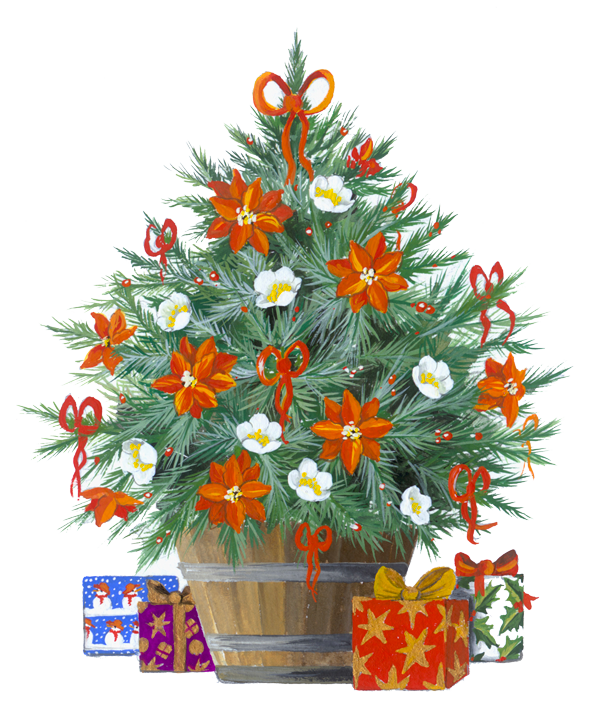
The tradition of the christmas advent calendar, from the latin "adventus" or arrival, started in 19th century Germany. Some say the inventor was Gerhard Lang’s mother who attached 24 cookies, one per day, onto a cardboard. In 1908, Lang & business partner Reichold started producing the calendars, without cookies but with images to discover. In 1946, Richard Sellmer began to export them outside of Germany. Recent years have seen a veritable boom in the market, worth more than 400 billion British pounds in 2019. On top of calendars for children primarily with chocolates we see many aimed at adults with beauty products, food, socks, tea, or even gin! We obviously stuck to the traditional image version, hope you enjoy the variety we chose!
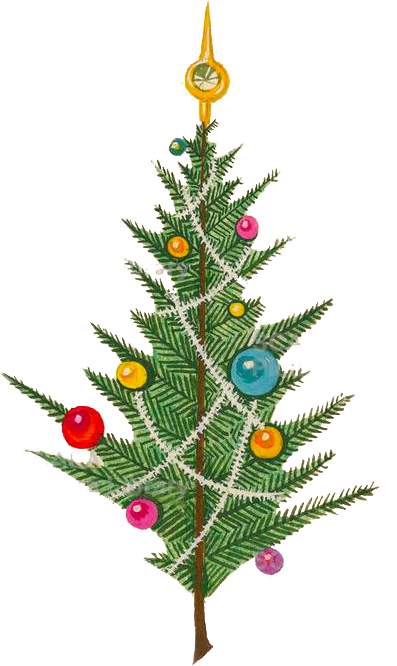


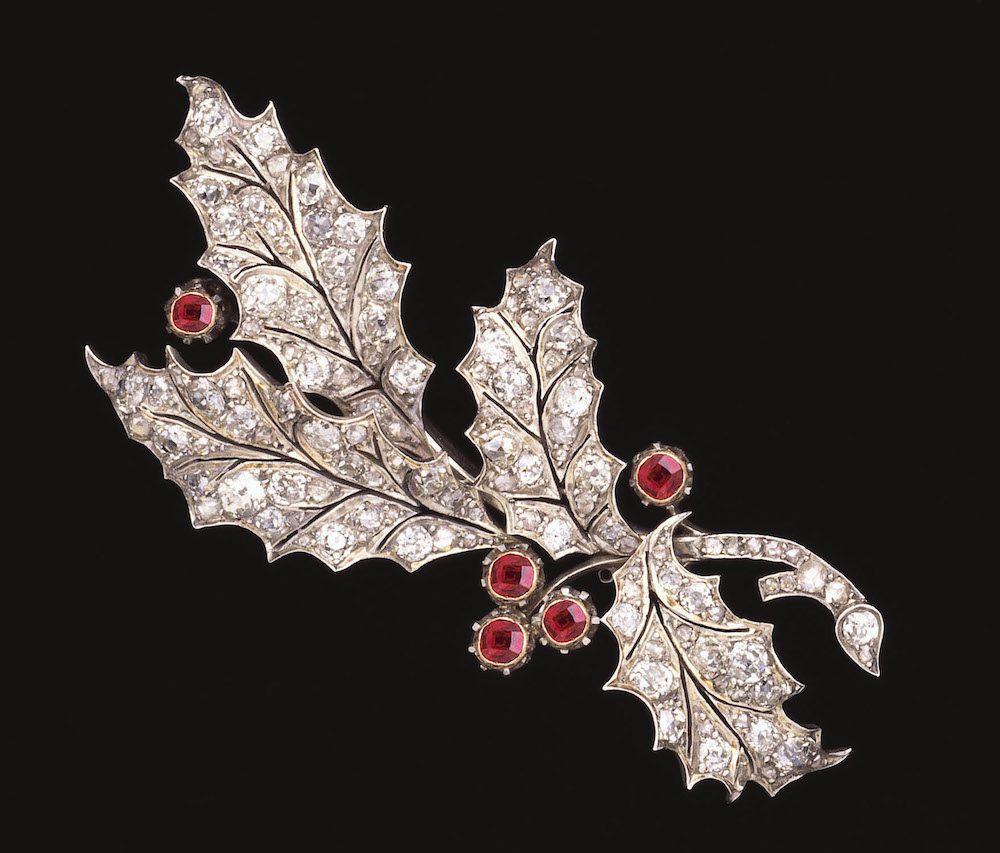
Holly (also known as prickly laurel or butcher’s broom) has always been considered a magical plant, a lucky charm, for its healing properties. Colors and abundance make it perfect for Christmas decorations, of which the shrub is a symbol.
This Victorian-era jewel must have been a special gift…
Diamond holly sprig from a Victorian collection, circa 1870-1880
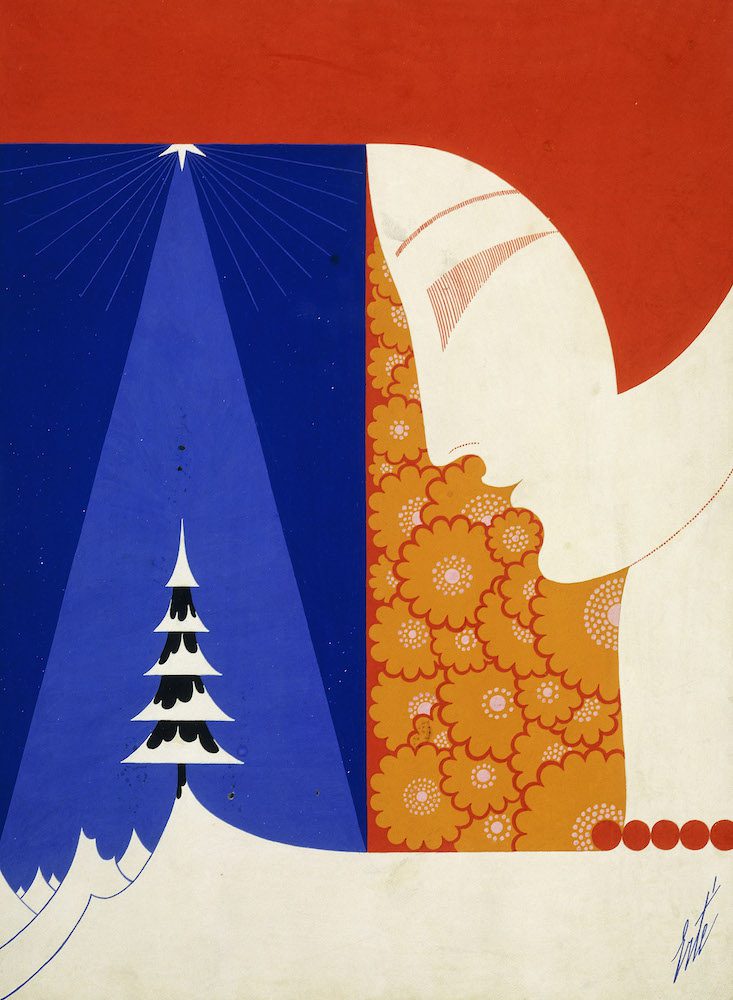
The Christmas tree is a universal symbol of the holiday season. In ancient times evergreens were symbols of eternal life. Pagan Europeans also worshiped these trees. Once Christianity was no longer persecuted the importance of the plant remained, its branches used to decorate houses and scare away the devil at the new year. In Germany the evergreen Yule tree was decorated and placed with great ceremony at the entrance or inside the house for the winter solstice festivities.
Ertè, Christmas. 1929. Gouache
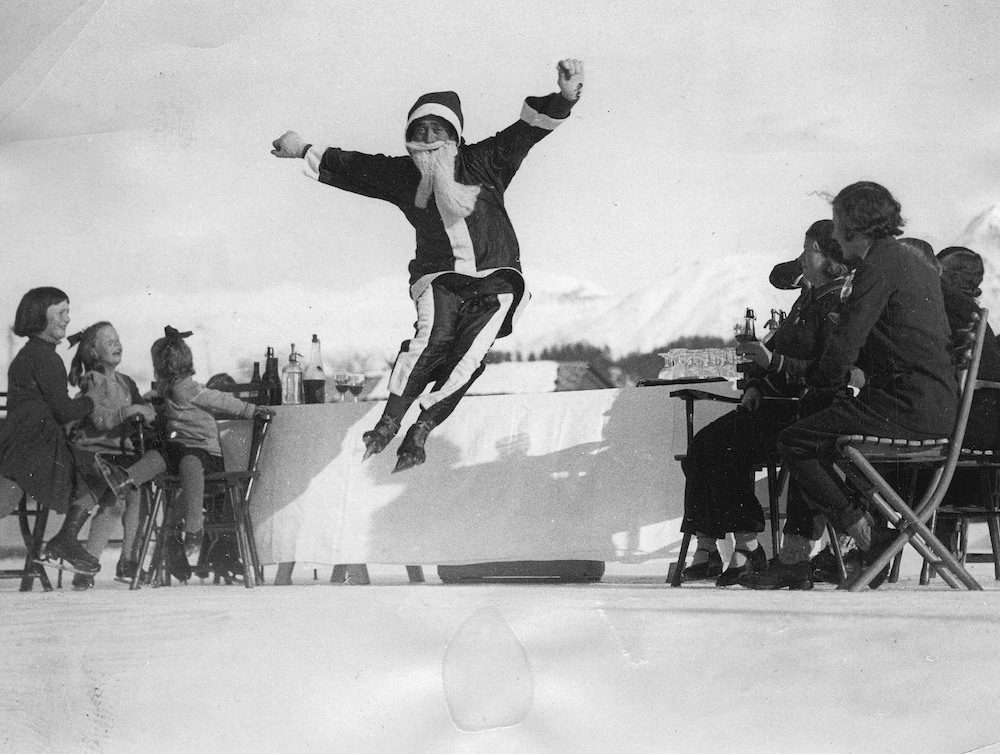
For many, especially in Europe, Christmas represents a moment of leisure and above all of holidays in the snow. Before the days of shopping malls, Santa Claus was often seen in ski resorts where he was a main attraction amusing young and old.
Santa Claus jumps over a table at the Grand Ice Rink in St. Moritz. 27th December 1930. Photograph.
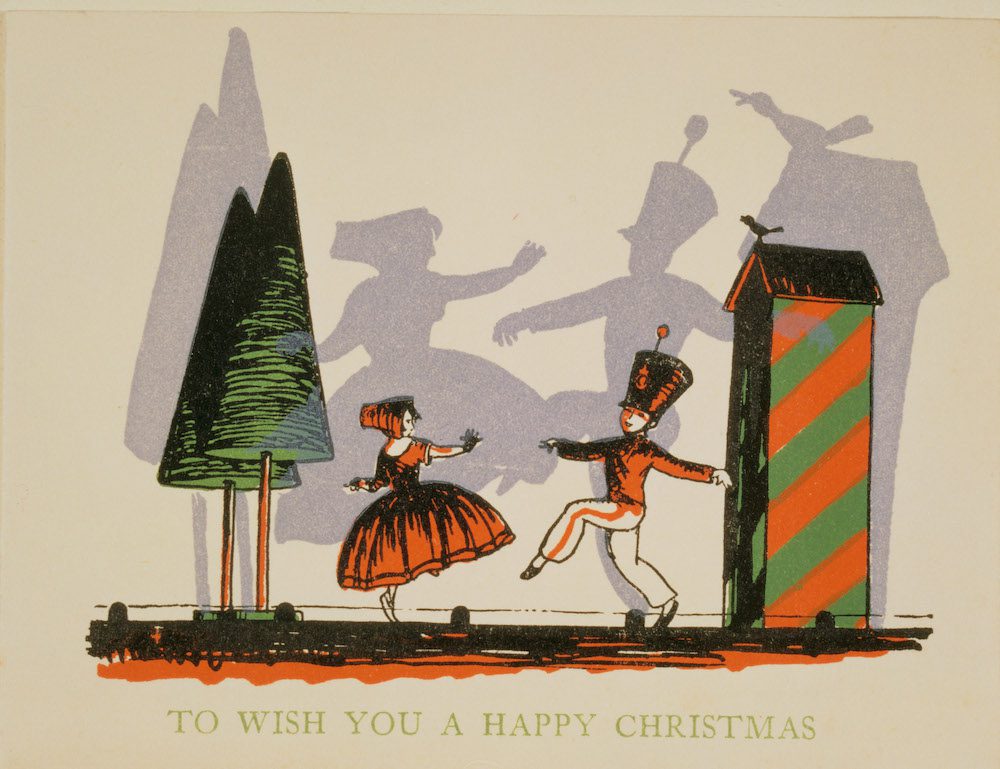
Made famous thanks to the success of Tchaikovsky’s ballet, the Nutcracker is one of the most fascinating stories related to Christmas. However the origin of the German custom of having “at least” one Nutcracker at home at Christmas originates from ancient german folklore which saw nutcracker soldiers as a symbol of good luck and protection against evil spirits…
Christmas card with scene from The Nutcracker Suite. England, 19th century
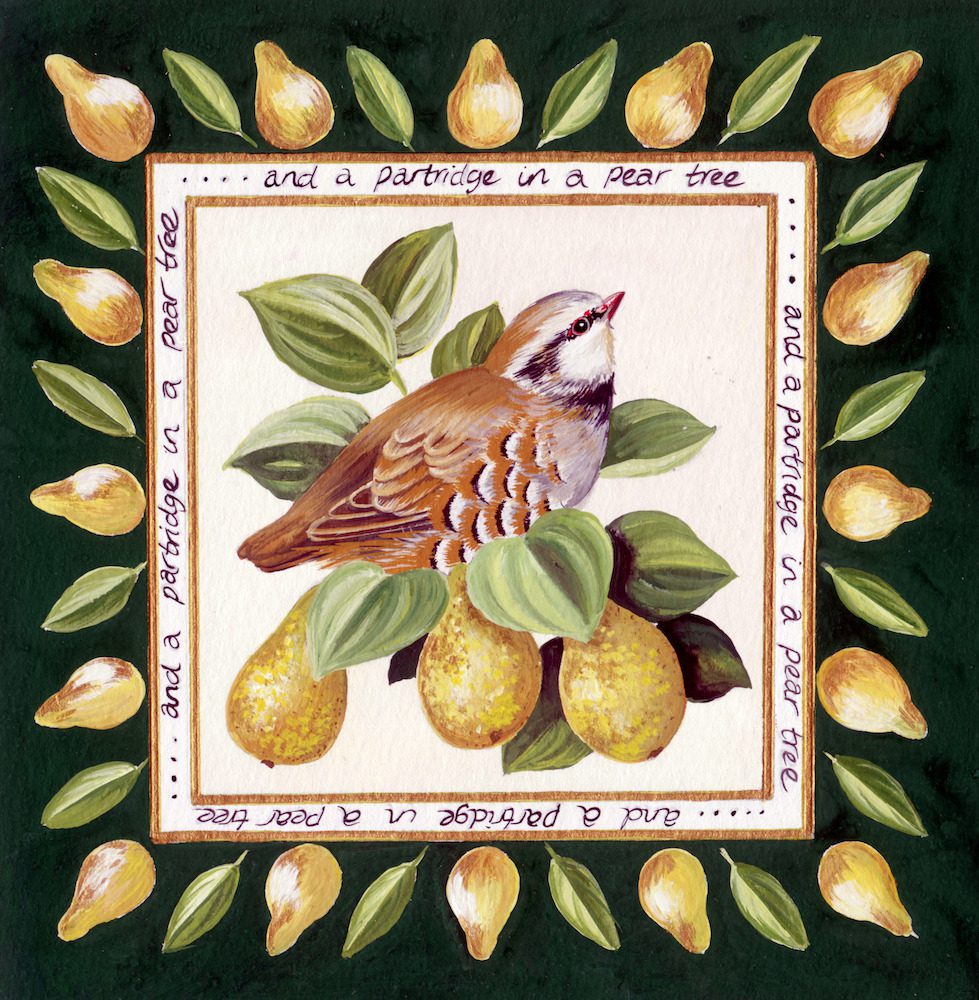
“Twelve Days of Christmas” is a famous English Christmas carol from the late 18th century. It is an example of a cumulative song and describes the gifts that are received from a “true” love on each day of the twelve days of Christmas. The twelve days of christmas are the period from Christmas day to the Epiphany. The gift on the first day is a partridge in a pear tree.
A Partridge in a pear tree. Square design by Claire Comerford.
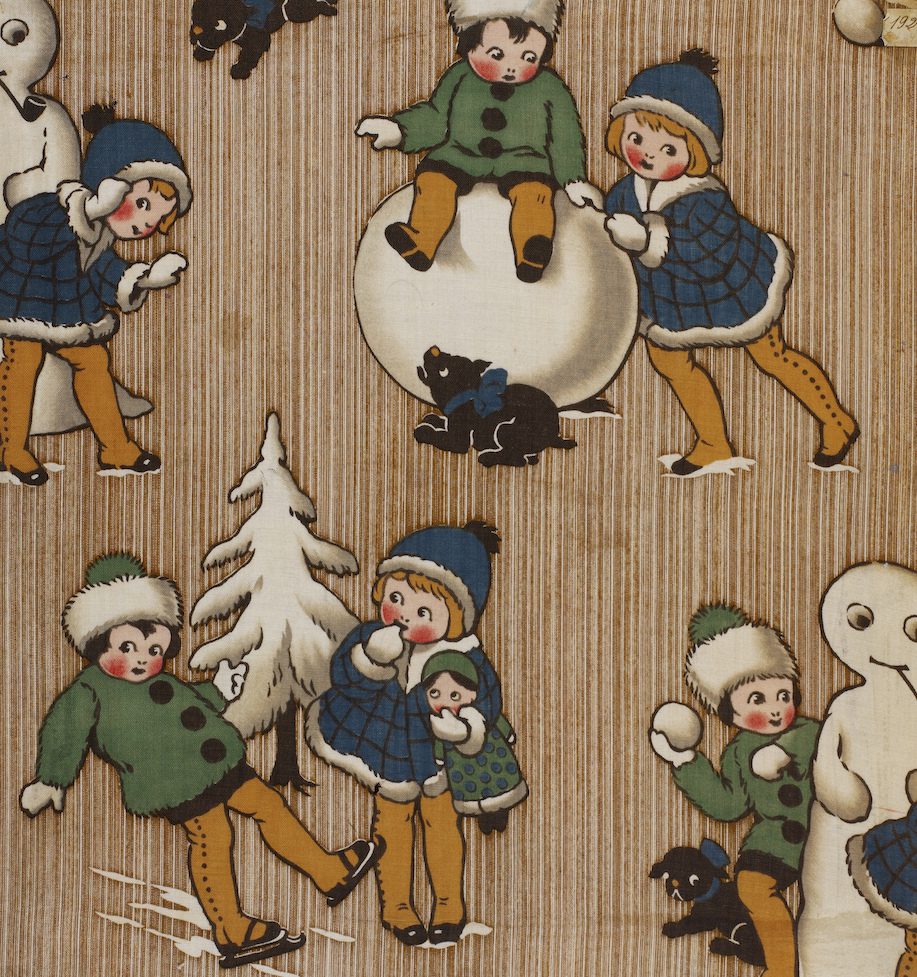
Snowball fight? Let’s make a snowman! Children’s fun and games echo in the pattern of this late 19th century cotton fabric which is preserved in the Musée de l’Impression sur Étoffes in Mulhouse. In the Alsatian city nicknamed the “one hundred chimney city” and “the Manchester of France” for its past industrial importance, this museum houses the largest collection of printed fabrics, with circa 6 million pieces!
Textile with pattern for children, 1890. Musée de l’Étoffe, Mulhouse, France
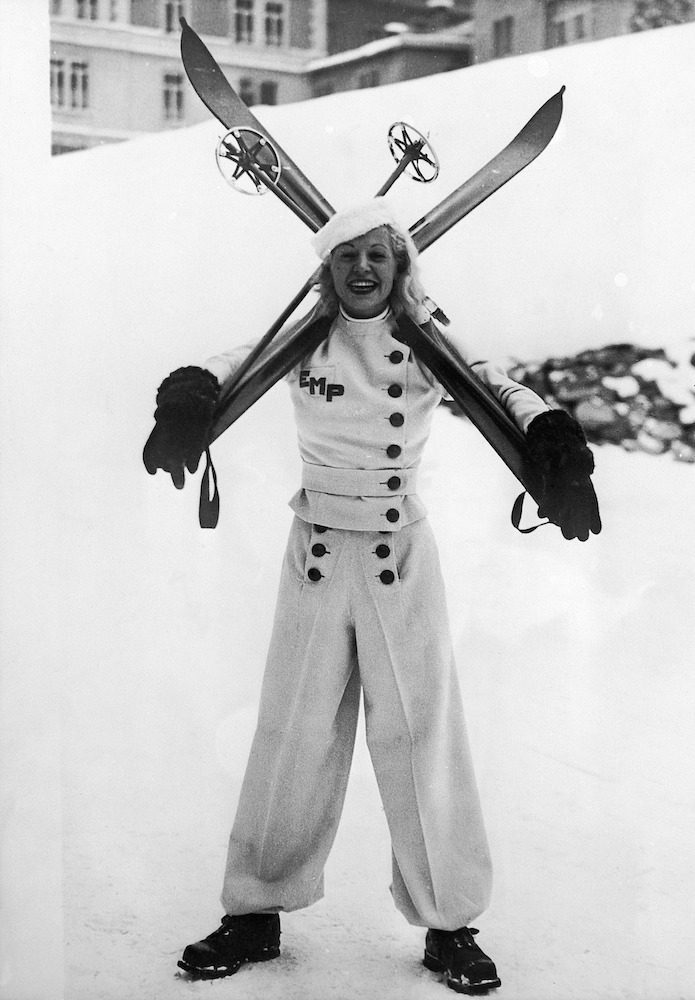
The 30s were the golden age of skiing. New ski resorts, new technologies and techniques, such as the introduction of the toe rope or laminated as well as aluminum skis, made the sport popular.
Ski fashion became a big element and ski clothing was included in fashion magazines. New knit & stretchy yarn made it possible to have tight-fitting cuffs to keep out snow. Women wore ski pants, like men. Many think that it was “sports clothing” that lead the way for women’s pants being the norm today.
Let’s all pack our ski pants and head to the slopes!
Skiing fashion,photograph 1935
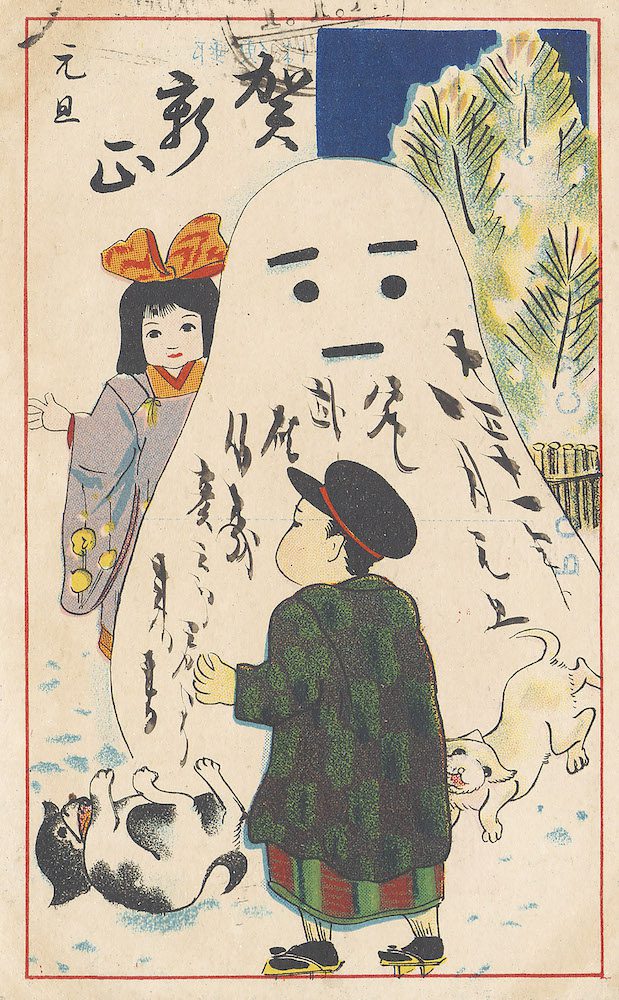
Christmas is neither a traditional nor a scheduled holiday in Japan, however the entire Christmas season is synonymous with happiness.
The season leading up to their most important celebration – New Years – is filled with Christmas markets, unbeatable lights, decorations, and parties
with friends.
The season’s spirit is captured perfectly in this early twentieth century new year’s greeting card. Tradition requires that the Japanese, who are unquestionably masters in the art of calligraphy, send New Year’s greetings to friends and relatives and that such cards be specifically delivered on January 1st.
New Year’s Card: Children with Snowman – Japanese art, 1922, Museum of Fine Arts, Boston, USA
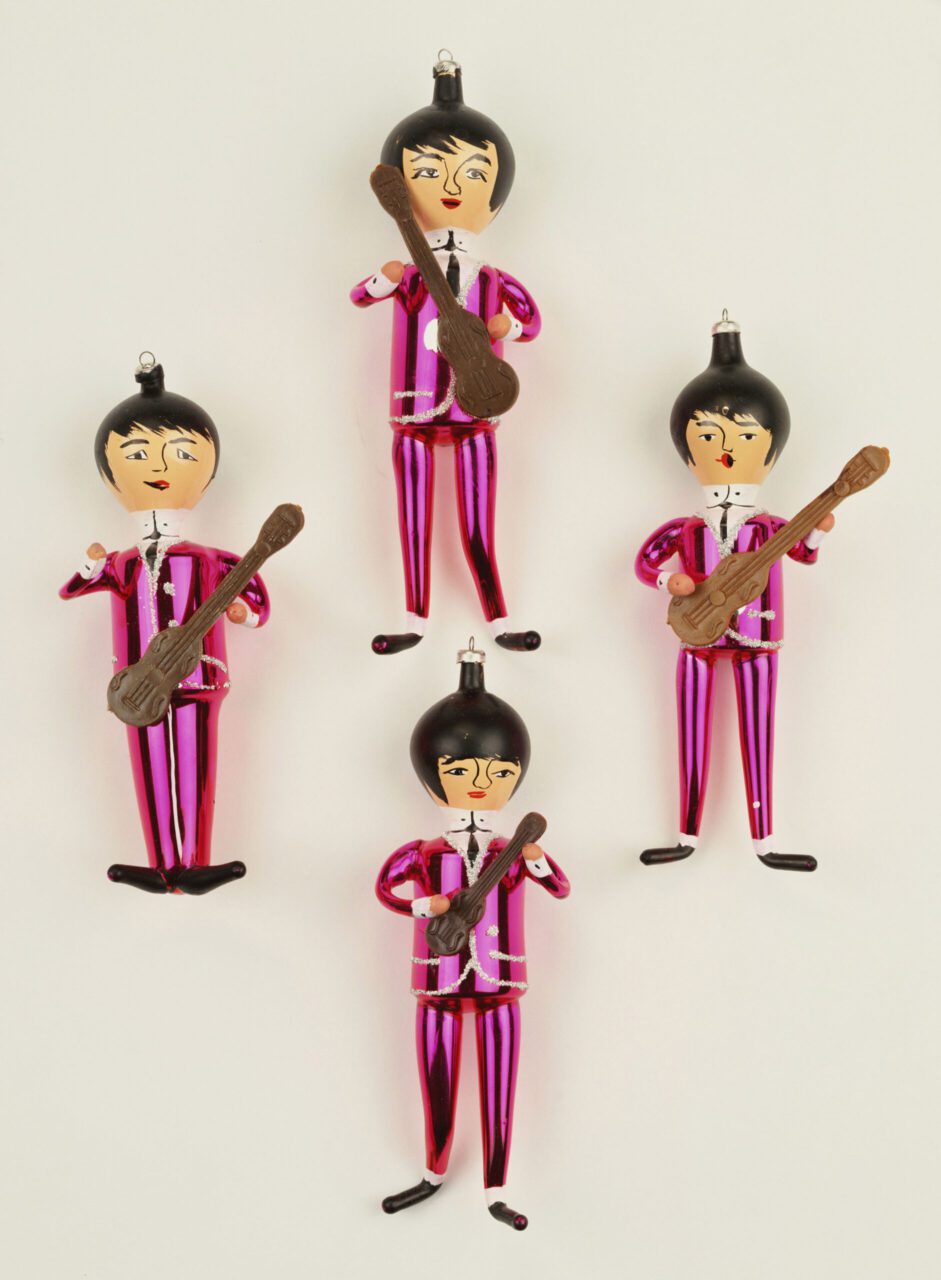
The imagination of artisans and specialized companies offer fantastically creative decorations, even bringing the Beatles on the Tree! The tradition of making glass balls as a decoration for the Christmas tree dates back to 1858, when a French craftsman from the village of Goetzenbruck, owner of a factory specializing in the production of glass, had the ingenious idea of carving glass balls to make the Christmas decorations.
Italian School, (20th century). A rare set of four blown glass christmas tree decorations modelled as the Beatles. Made in Italy, 1960s.
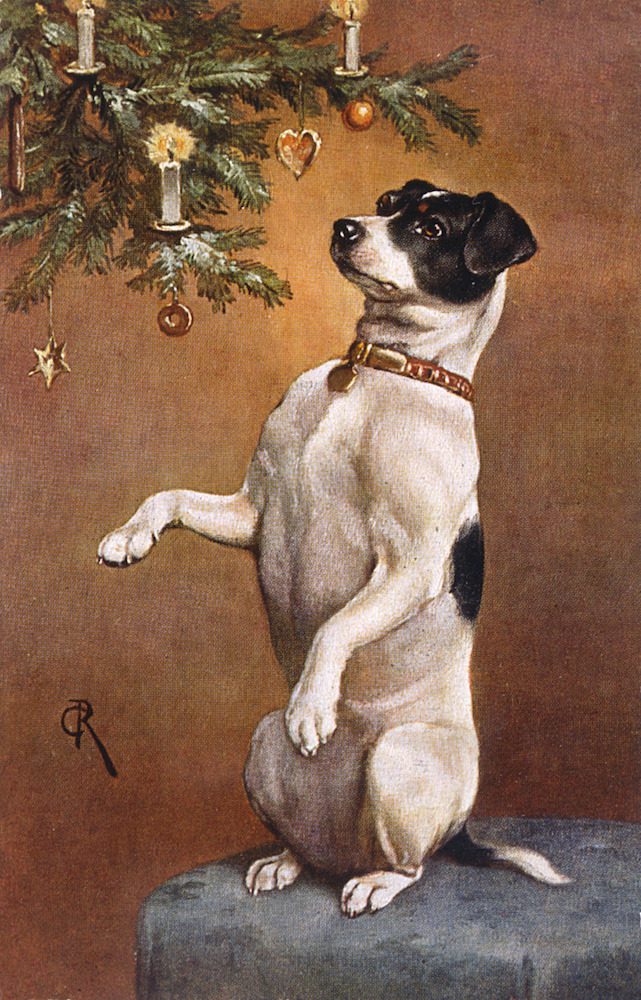
Is this cute terrier supervising the tree decoration, or is he begging to eat one of the ornaments?
In the 1800s trees were decorated with candies, dried fruit and nuts. To this day in various countries trees are often decorated with ginger cookies, sugar cane candies, and garlands of popcorn and cranberries, and all are surely very tempting for the puppies!
Christmas is a holiday to spend with the family, pooches included. Did you know that in the USA some companies grant paid parental leave to employees who adopt a puppy? On average 50% of owners purchase a christmas present for their dog, and the trend is on the rise.
Dog Begs at Xmas tree 1930s. Unnamed artist ‘C.R.’
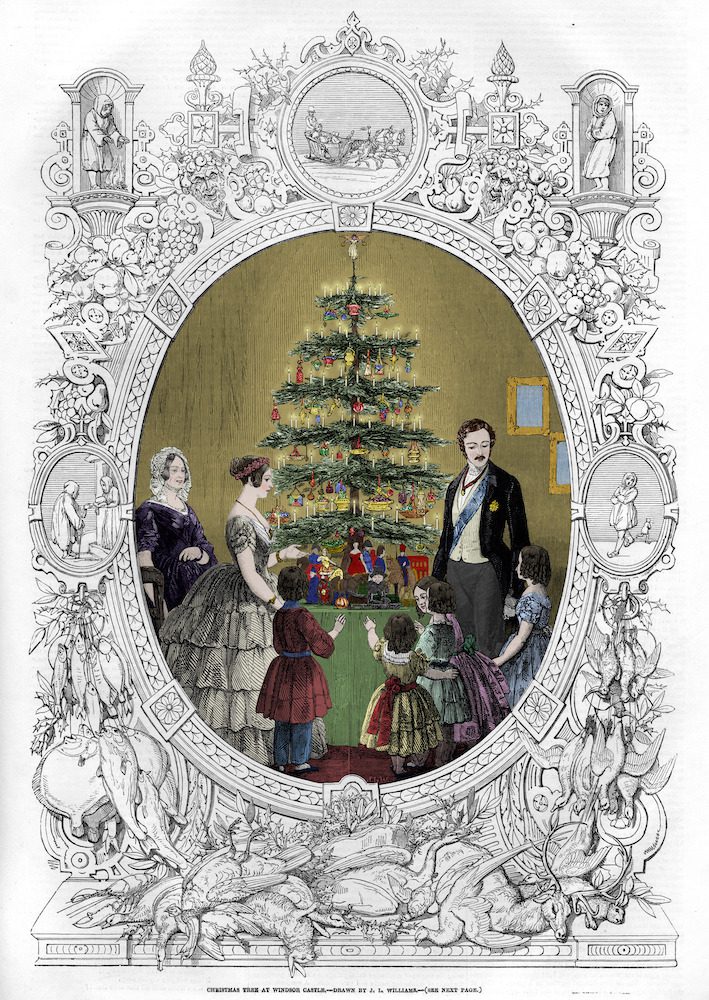
One could say that Queen Victoria and Prince Albert were the promoters of the modern Christmas. In Windsor Castle, various trees were set up every year: one for Victoria, one for Albert, one for the Duchess of Kent, one for the children and one for the servants. Placed on tables covered with damask tablecloths, the trees were invariably decorated with candles, small decorations and sweets. This illustration, which appeared in 1848 in the Christmas supplement of the Illustrated London News magazine, launched the Christmas tree fashion in England and the rest of the world.
Christmas Tree at Windsor Castle. llustrated London News, December 1848.
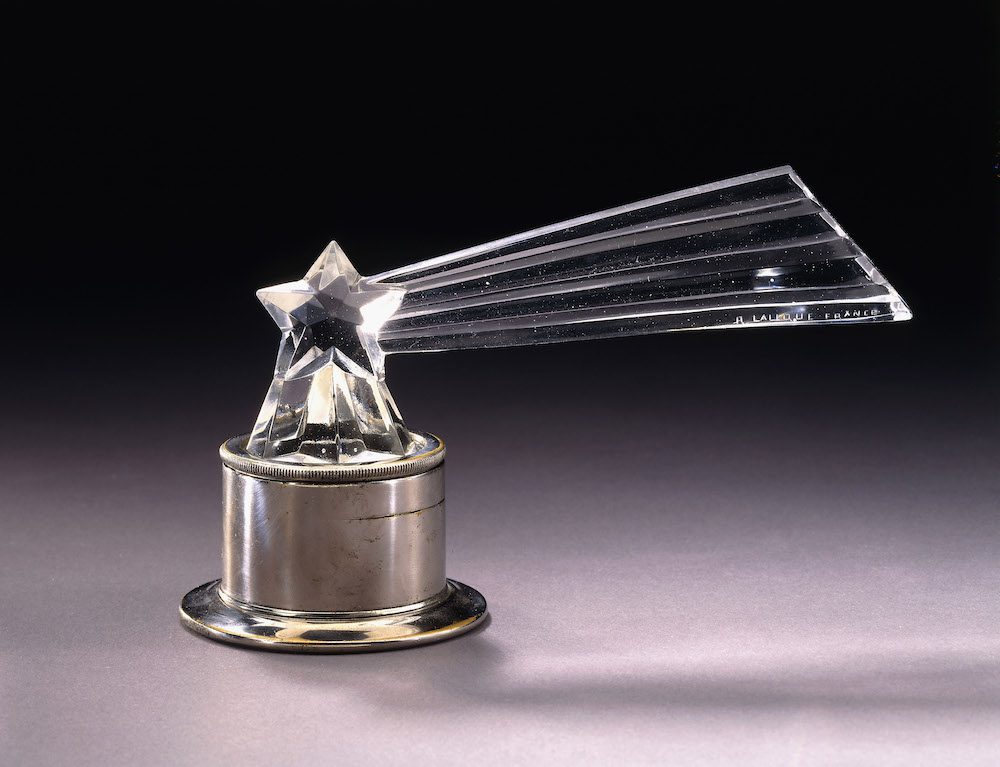
The first to paint a comet was Giotto in the Scrovegni chapel in Padua. Since then, the star that identified the birth of Jesus and guided the Magi on their long journey, has been depicted as a star with a tail. Some have speculated that Giotto was struck and influenced by the vision of Halley’s Comet. Many centuries later we are struck by this icy and very bright comet: a unique car ornament by Rene Lalique.
Rene Jules Lalique, Comet; an automobile mascot molded in the shape of a comet.C.1925.
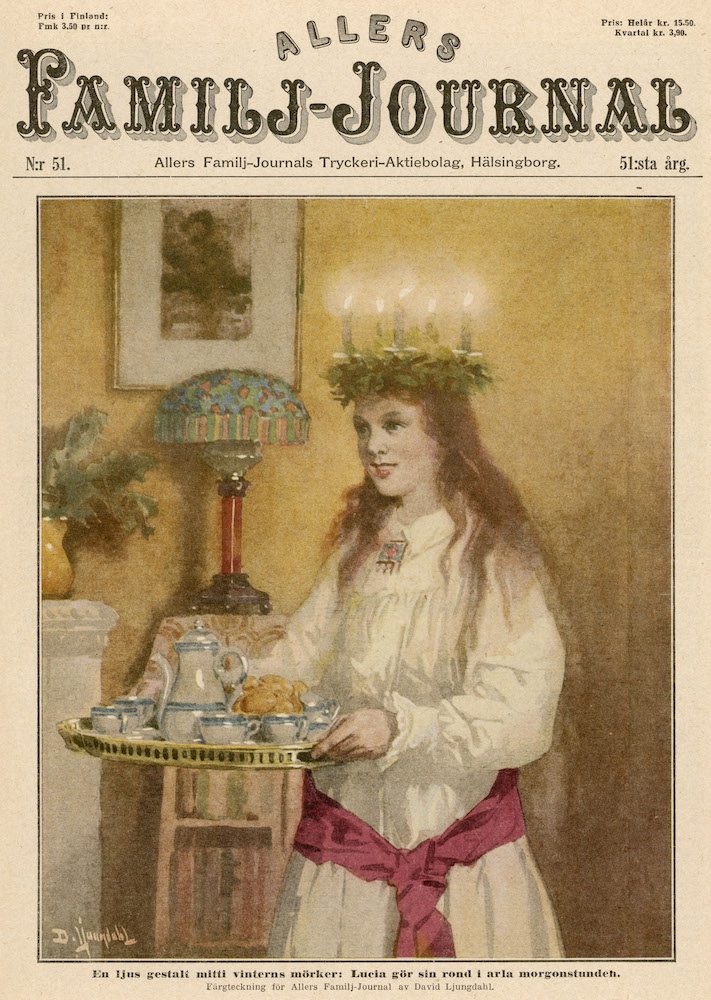
According to the tradition of Northern European countries, “Lucia’s night” is the longest of the year and is crowded with demons. It is said that a very young and rich girl named Lucia secretly went out into the night to distribute food to the poor. To help her see she wore a crown of candles on her head.
In Italy, on the contrary, we celebrate Saint Lucia’s day as the shortest of the year but here too Saint Lucia is seen as bringing light and hope.
Saint Lucy’s day – The girl chosen to be Lucia carries coffee and cakes to those preparing Christmas gifts and decorations David Ljingdahl in Allers Familj-Journal, 13 December 1927
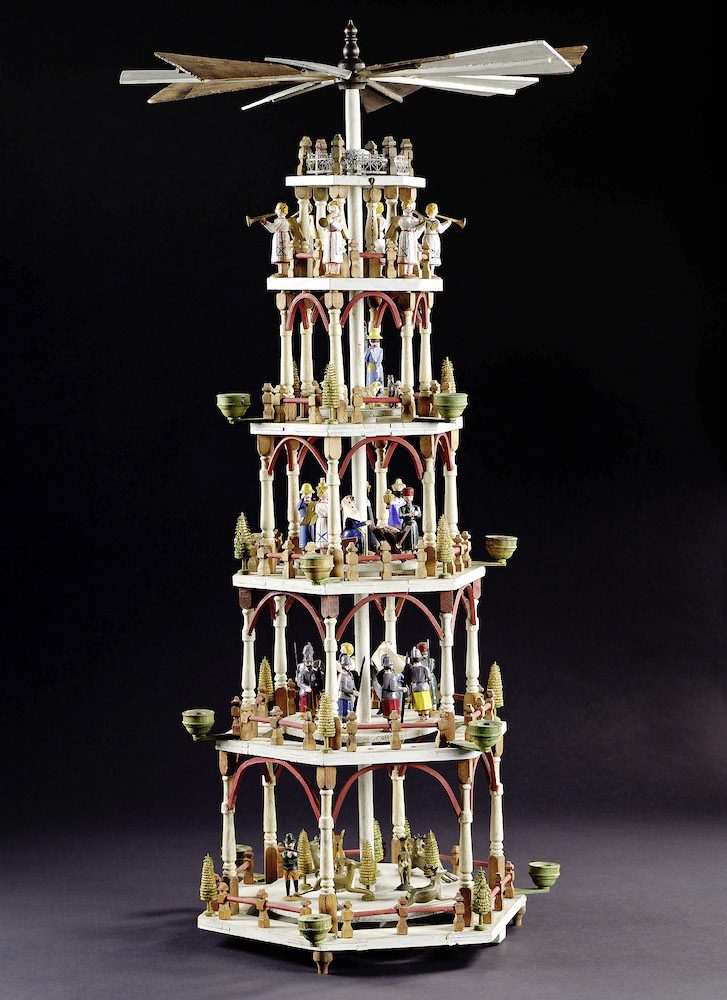
A popular German & medieval play about Adam & Eve was centered around a “paradise tree”, a fir tree decorated with apples. Hence the tradition to have a paradise tree at home on December 24. In the home Germans also had the “Christmas pyramid,” a triangular construction decorated with evergreens, candles, a star & figurines. By the 16th century the Christmas pyramid & the paradise tree had merged, becoming the Christmas tree.
The propeller of this 1910 pyramid, is activated by the heat of candles placed at the base & turns the 4 levels with hunting scenes, the flight in Egypt, the Nativity & the Magi.
Globenstein Christmas Pyramid, designed by Rudolf Flemming (1874-1962), c. 1910. Museum Europaeischer Kulturen – Staatliche Museen zu Berlin, Germany
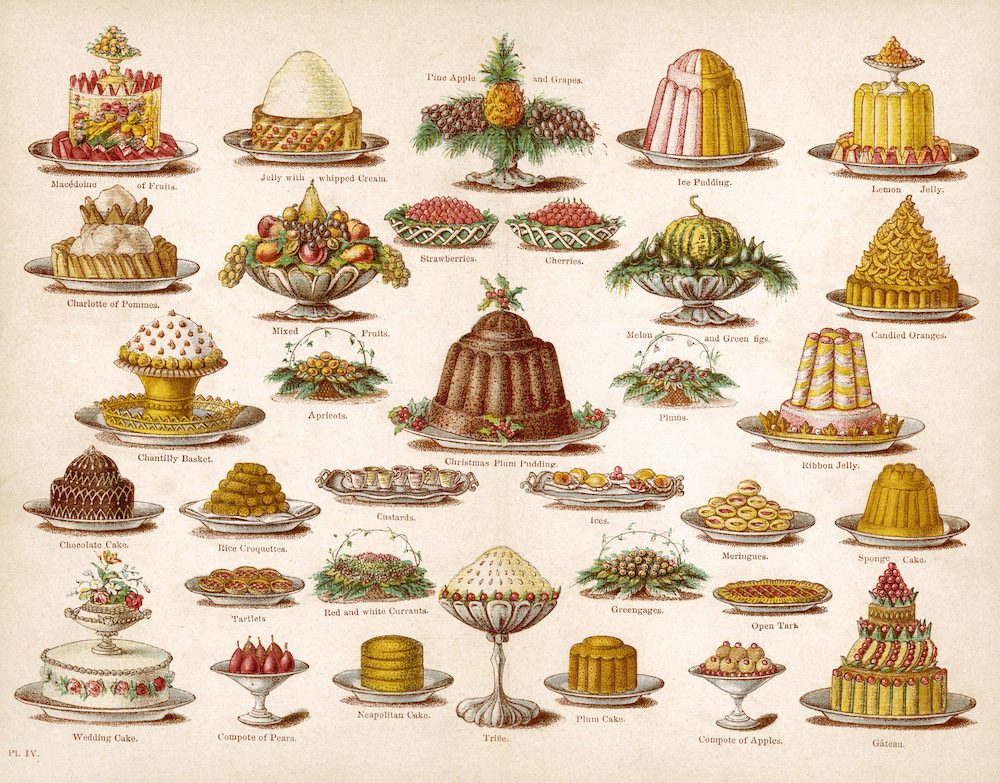
There are deserts that are eaten only at Christmas time, each country has its own tradition: in England there is the Christmas pudding, Italy has panettone and pandoro, the Bûche de Noël in France, the Stollen in Germany, Fruit cakes and Ginger Bread cookies in the USA.
Eating these desserts takes no time at all, but which took the longest to bake? Christmas puddings and fruit cakes, with their intense flavors and deep color, require between 4 and 6 weeks!
Desserts, Mrs Beeton’s Everyday Cookery (1865 edition)

Pin-ups gained popularity with WWII when they were intended to boost morale of soldiers. In the 50s they became more sexual & in many cases they were criticized as cliche’ and not artistic expressions.
The Calendar pin-ups by artist, teacher, and writer Merlin Enabnit were greatly by the British soldiers as well as art critics. These pin-ups were created using an airbrush & are signed simply “Merlin”, hence the cheeky reference to them as “Merlin Girls”. They appeared in various publications including “Sketch” magazine, on calendars, playing cards, and postcards.
In this specific work entitled “melting appeal” Enabnit’s skillful use of space and color is equally mastered by his use of whit.
Melting Appeal by Merlin Enabnit. The Sketch. 28th February 1940.
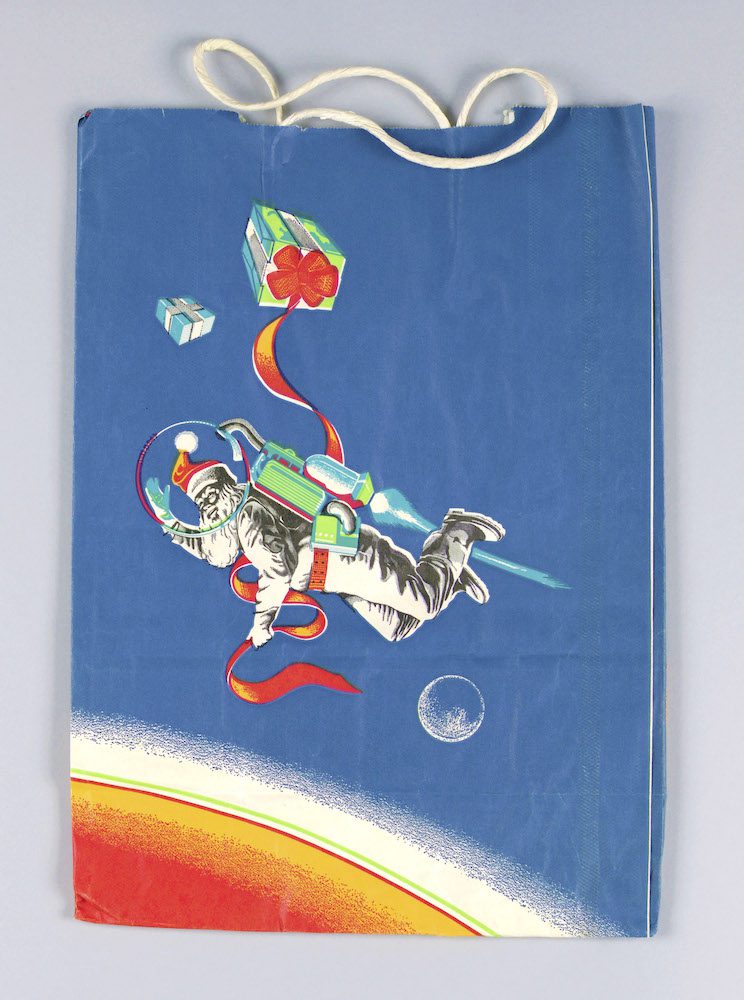
Bloomingdale’s is a famous American luxury department store chain which was founded in New York city in 1861. In 1922 the store printed on their shopping bag a message thanking loyal customers. The promotional impact was enormous. Since then the company produced numerous paper bags which brightened the streets of New York.
The bags created between 1979 and 1993 are especially important as the store commissioned popular designers and artists to use the paper bag as a canvas & create a statement of the times.
This bag is from 1979 & shows a scientific & technologically savvy Santa Claus. It is one of the many design objects preserved at the Cooper-Hewitt Museum.
Shopping bag, Bloomingdale’s: Christmas, 1979. Designed by Bob Alcorn. Cooper-Hewitt – Smithsonian Design Museum, New York, USA
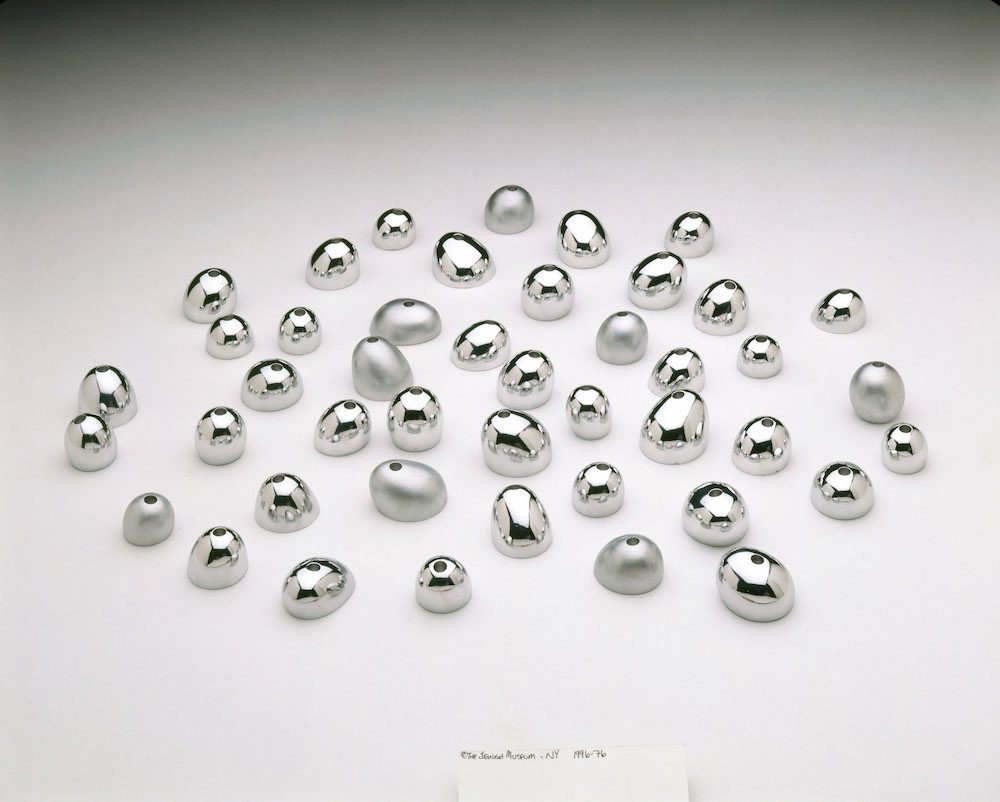
Hanukkah is a Jewish holiday, also known as the Festival of Lights. It lasts 8 days, to celebrate the miracle of an oil lamp having lasted 8 days instead of 1, during the Maccabean revolt. This year the festivity will start on the evening of December 18th. The symbol is the Menorah, a candelabrum. On the first evening, only one candle is lit and it is done from the right side of the candelabrum. Every evening, for eight evenings, an extra candle is added. This specific menorah, with 44 aluminum pods, of which 8 are unpolished & intended for the 8 days/candles is unconventional & contemporary. All 44 pods can be held in the palm of a hand and can be arranged as desired. It was designed by architect and designer Harley Swedler.
Harley Swedler, Hanukkah Lamp. Great Neck, NY, 1995. The Jewish Museum, New York, USA
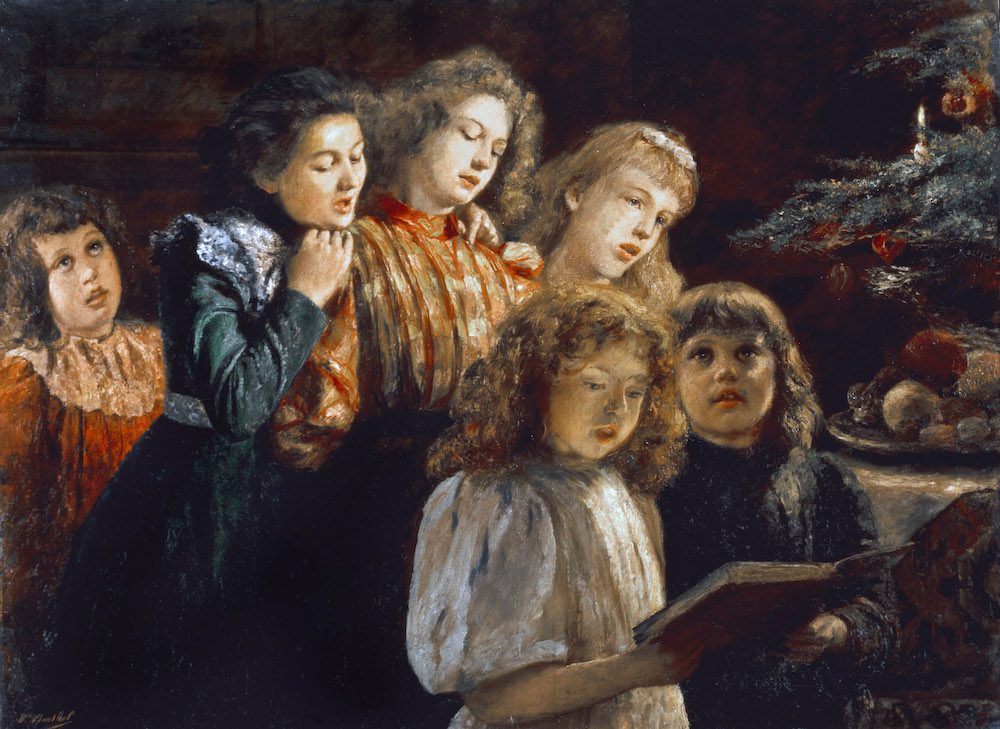
The tradition of singing songs in Christmas liturgies is documented as early as the 4th century. Now a days in Italy throughout December the sound of bag pipes echo in the streets; in England, since the Victorian era, the Christmas Carolers have moved from house to house singing their Christmas carols. The most famous song, known throughout the world, is probably Stille Nacht or Silent Night or Astro del ciel.
Paul Barthel, The Choir, Private Collection
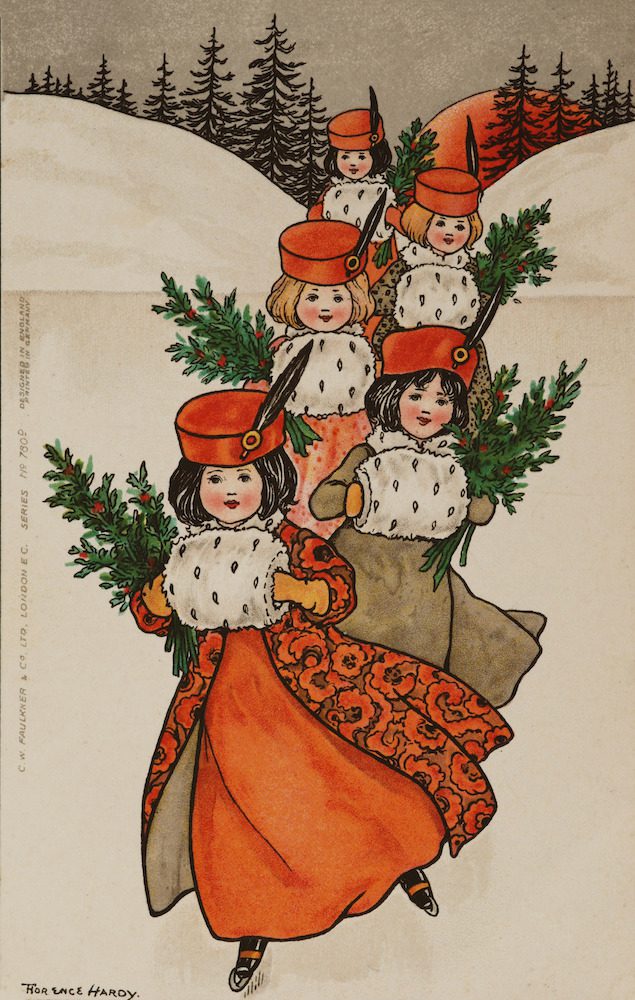
The first Christmas card printed for commercial use dates back to 1843, in the middle of the Victorian era, in London. Within a few years, the production of printed postcards grew to touch the peak of 5 million postcards printed around Christmas time. The new custom soon expanded beyond national borders. The postcards were used to exchange greeting messages and the themes and decorations were mostly funny, with children, animals, and flowers. Around the 20-30s of the twentieth century, subjects more closely linked to the Christmas season such as Santa Claus, green leaves and other winter scenes were introduced.
Christmas children skating by Florence Hardy, c. 1920. Illustration on a postcard
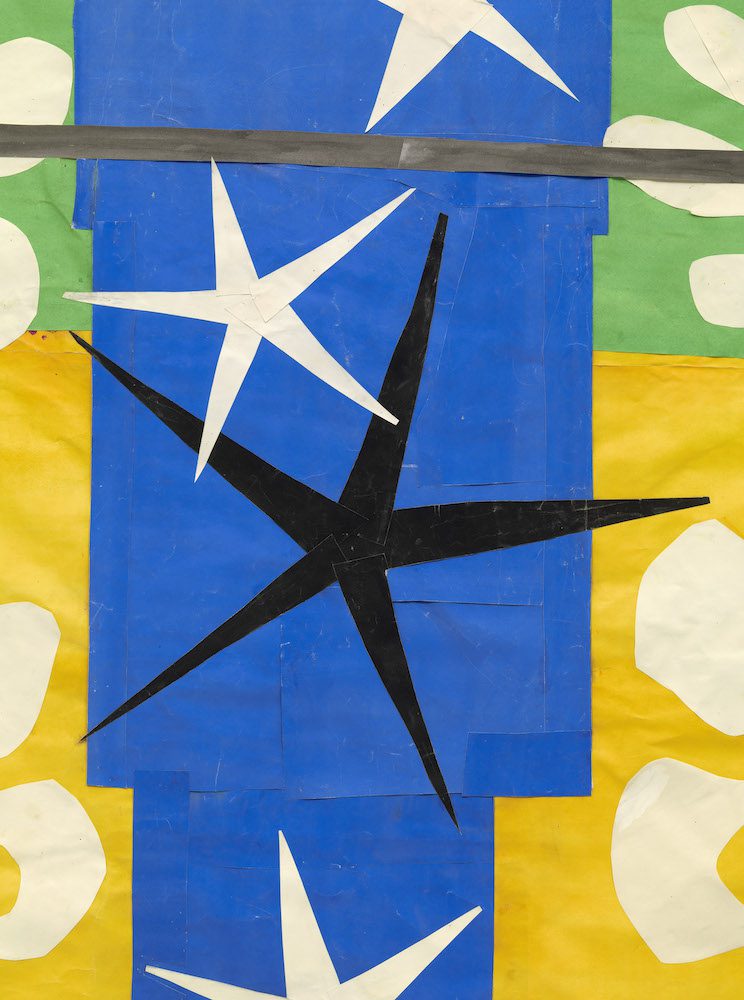
Between 1949 and 1951, the French painter Henri Matisse, by then an old man, dedicated himself to the project for the church La Chapelle du Saint-Marie du Rosaire in Vence, on the French Riviera. For one of the church’s stained glass windows the subject, never realized, was supposed to be Christmas Eve.
Today this sketch is part of the collection of the Museum of Modern Art in New York.
Maquette for Christmas Eve, detail, 1952, by Henri Matisse. Gouache on paper, cut-and-pasted, mounted on board
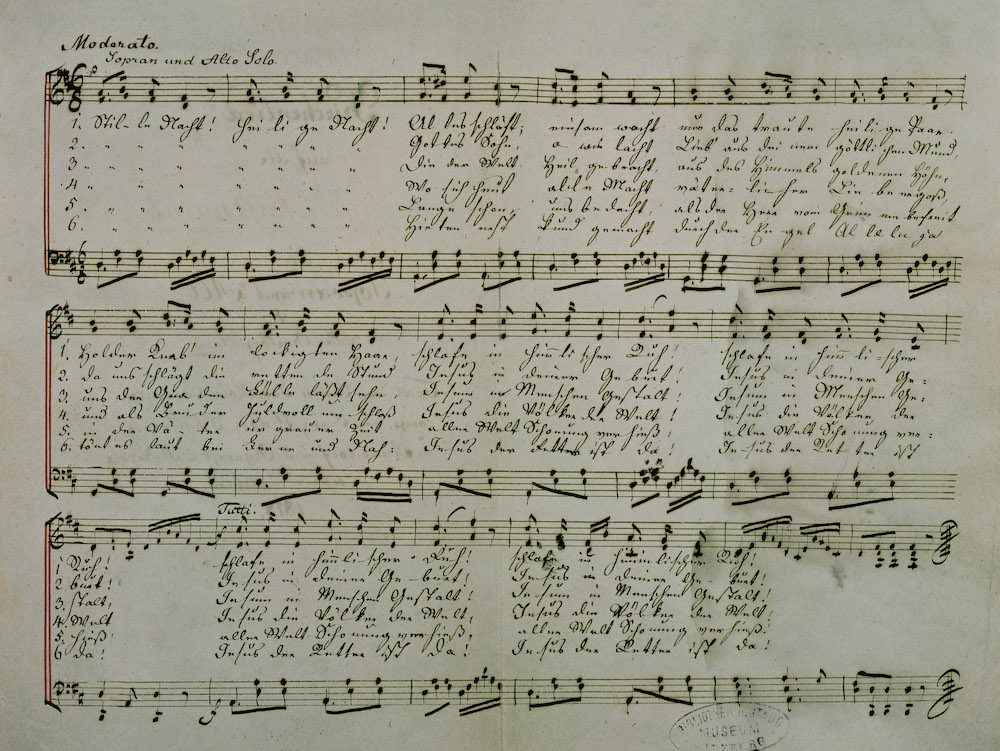
The notes of this famous Christmas carol, of Austrian origin but translated into more than 300 languages, written by priest Josef Mohr for the text and set to music a few years later by Franz Xaver Gruber, echo throughout December in many cities. The first score was for choir and guitar. The first public performance took place on the night of Dec. 24, 1818 during Christmas Mass at St. Nicholas Church in Oberndorf, near Salzburg.
Manuscript, Score of Stille nacht, Museum Carolino Augusteum, Salzburg, 1818
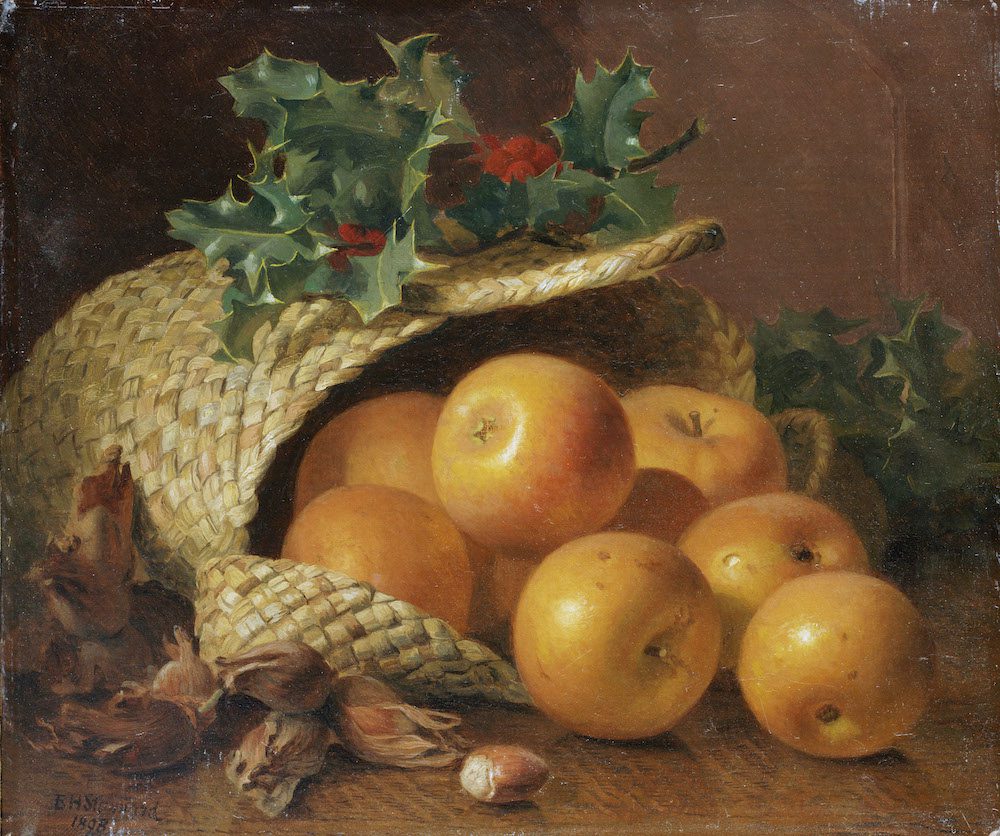
The Christmas table is often decorated with symbolic and abundant fruit and plants (in the West). Usually oranges, pomegranates, cinnamon, walnuts, hazelnuts, almonds and apples but also laurel, holly, sprigs of pine and pine cones, poinsettias, sprigs of red berries and golden leaves.
Still Life with Apples, Hazelnuts and Holly, 1898 by Eloise Harriet Stannard. Oil on canvas.
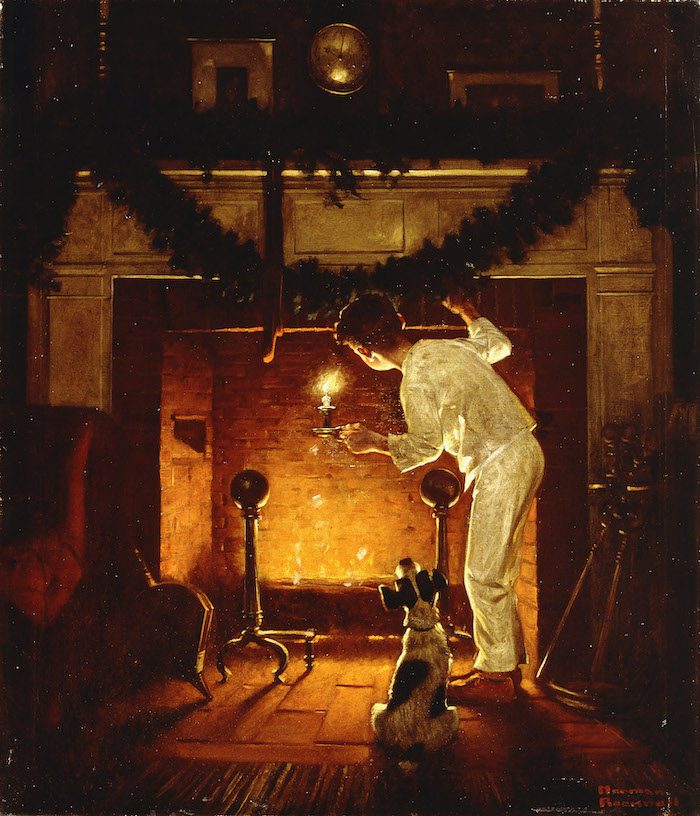
Who among us hasn’t gotten up in the middle of the night to wait for Santa Claus to arrive with his presents?Christmas Eve is a magical time, with emotions running so high that even as adults we remember how incredible it felt when we were children!
Norman Rockwell, Is he Coming ?, Oil on canvas
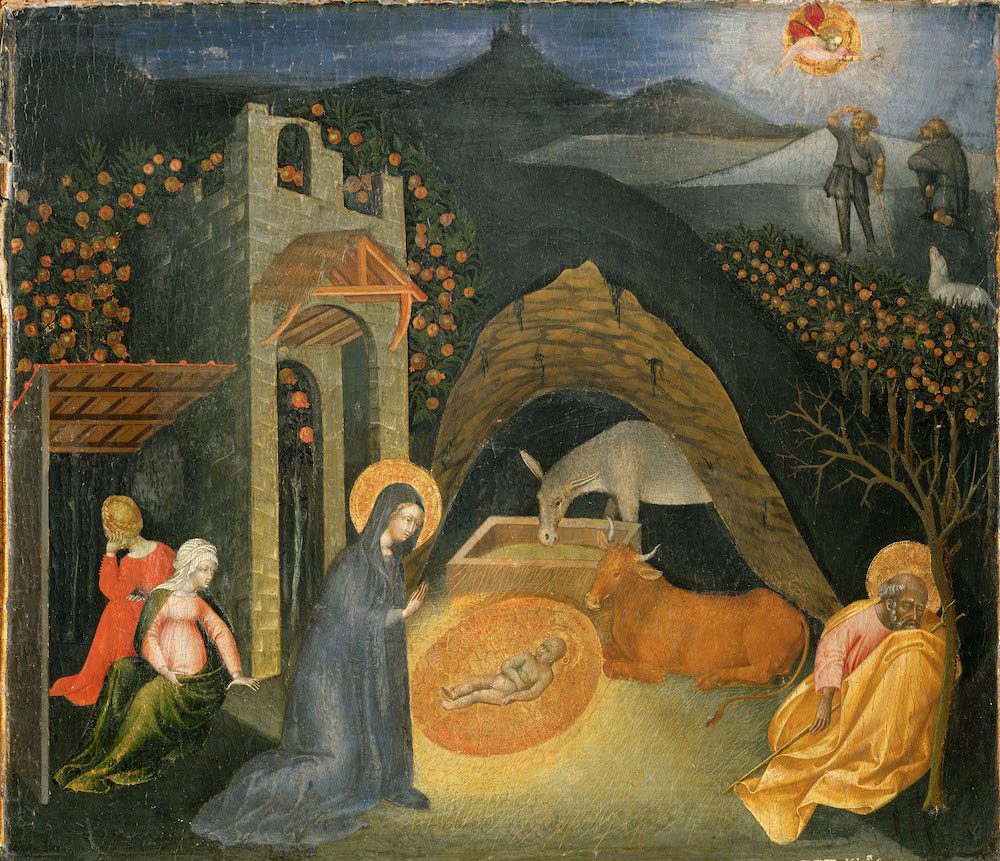
The nativity of Jesus Christ has been represented since ancient times. Originally it was done with simple scenes or inscriptions. The nativity is a deeply felt tradition in Italy, where it is often represented even in the domestic sphere. The way the nativity is defined today is due to Saint Francis who, upon returning from a pilgrimage to the Holy Land in 1223, asked Pope Honorius III the authorization to represent Bethlehem and the nativity. The first cresh was set up near the convent of Greccio.
This tempera on panel, a poetic and delicate nocturne Nativity scene, is an ideal link to the Cresh which culminates with the birth of Jesus.
We wish you a Merry Christmas!
Giovanni di Paolo, Nativity, XV century, Pinacoteca, Vatican, Vatican City